#North French Hebrew Miscellany
Photo





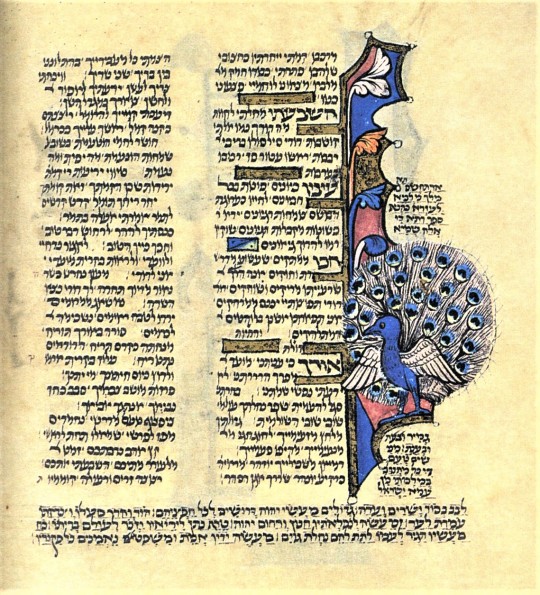




Summer Series: The Spectacle of Nature
Mythological Animals in Hebrew Illuminated Manuscripts
Humans have long used animal imagery represent the mysteries of life and death. This is true of the three eschatological animals of the Hebrew Bible. To examine these creatures and other animals in medieval manuscripts we turn to the North French Hebrew Miscellany from the 13th century that is held in the British Library (Add. MS 11639). Here in UWM Special Collections we have a lovely facsimile copy produced by Facsimile Editions of London in 2003 that allows for closer inspection.
The miscellany is a compilation of Hebrew texts, including religious, legal, and poetic writing. It is lavishly illuminated with various scenes from them. There are also depictions of three important mythological animals: the Ziz (a giant bird), Leviathan (a giant sea serpent or fish), and Behemoth (a giant bull).
From the commentary text section “The Decoration of the Miscellany” by Yael Zirlin:
Ziz: “This medallion displays a large, strange bird, with the body and webbed feet of a waterfowl, but with the wing and beak of a bird. Under its tail lies a huge brown egg. This is Ziz or the Bar Yokhani, which is the name inscribed underneath. According to the Midrash, the Bar Yokhani together with the Behemoth and the Leviathan will be served at the feast of the righteous in Gan-Eden, Paradise.
Leviathan: “Depicted here as a big fish with scales and fins, its mouth full of sharp menacing teeth. Its body forms a loop, the tail nearly touching the head. The Midrash considers the Leviathan to be the most important of the three eschatological animals. Like the Ziz it is destined to be eaten by the righteous in paradise after the mortal combat in which it and the Behemoth kill one another, producing the meat for the feast (Leviticus Rabbah 13:3).”
Behemoth: “The third eschatological animal, is also named shor habar, ‘wild bull,’ which is why it is portrayed here as a big bull. Its body is colourless except for a red contour.”
These three important creatures are prominently displayed with full-page illustrations, but there are other animal illustrations peppered throughout the manuscript, especially in the marginal decorations. There are both mythical beasts such as a griffon and dragon, along with real animals such as a monkey, peacock, rabbit, and lion.
Of course, all these illustrations were completed by hand by skilled illuminators. In the “Making of the Miscellany” section of the commentary text, Malachi Beit-Arié explains: “It appears that the production involved five successive stages: (1) copying the main texts in several stages; (2) illuminating the main texts; (3) adding unrelated texts in the margins and on the blank pages at the end of units; (4) decorating the marginal texts; (5) inserting quires of paintings and adding paintings to blank pages.”
Many images achieved an iconographic status because they were copied from other illuminated manuscripts or model books.
View more posts about the North French Hebrew Miscellany.
View more posts in the Summer Series: The Spectacle of Nature.
–Sarah, Special Collections Senior Graduate Intern
#Summer Series#The Spectacle of Nature#North French Hebrew Miscellany#illuminated manuscripts#Hebrew Illuminated Manuscripts#illumination#aniamals#mythology#religous#Jewish#Ziz#Leviathan#Behemoth#medieval manuscripts#manuscripts#facsimile#Sarah Finn#sarah#Hebrew books#Hebrew manuscripts
426 notes
·
View notes
Photo
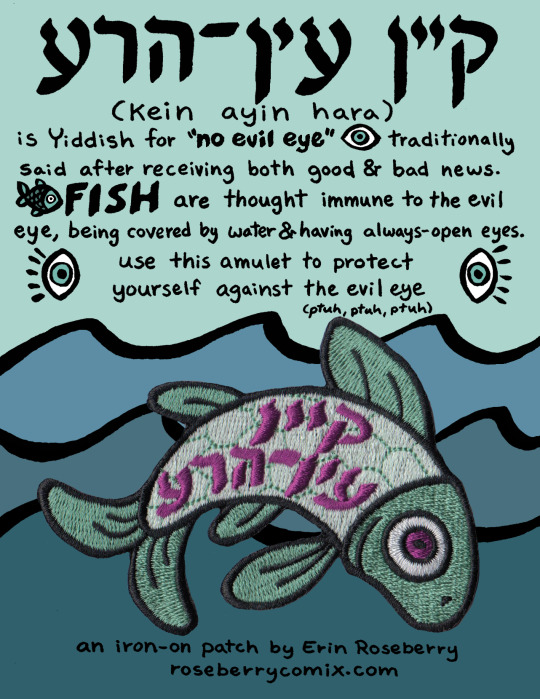
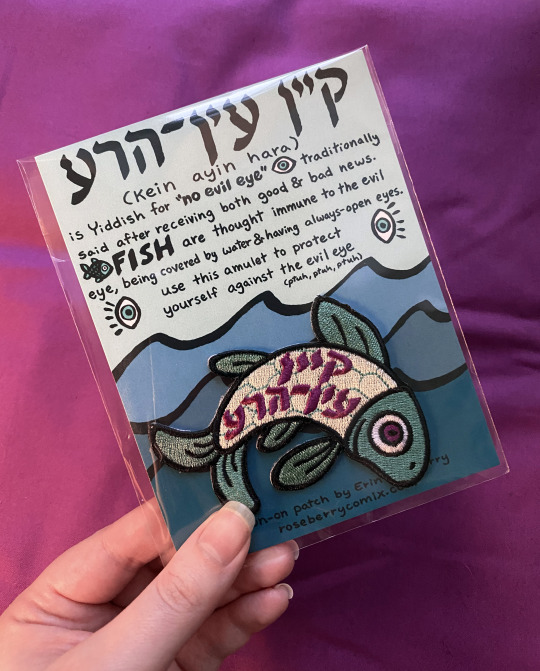

Not at MoCCA Online Con Day 1: Yiddishkeit Evil Eye Patches
These 3.5" embroidered patches are inspired by Jewish folklore, and feature calligraphy of a traditional Yiddish protective phrase--"kein ayin hara"/"no evil eye"--and another anti-evil eye symbol, the fish.
"Kein ayin hara", also pronounced "kinahora", is said to protect yourself from the evil eye and malevolent spirits, especially after receiving good news. This excerpt from the Yiddish Book Center’s Wexler Oral History Project gives a good overview of the phrase.
Fish are said to be incapable of being affected by the evil eye in the Talmud. There's a lot of fish imagery in Judiaca, and my fish design was inspired by these illuminations from the 13th North French Hebrew Miscellany.
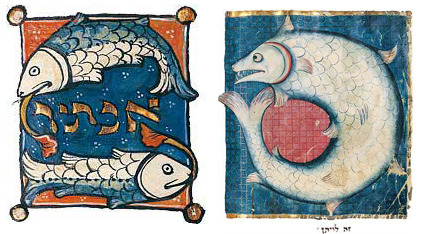
Each patch comes with a postcard-sized backing card briefly explaining the cultural meaning, and can be displayed on the card or sewn onto a bag or jacket (they are iron-on, but based on personal experience the shape needs to be sewn on as well for max stability).
These patches have become one of my favorite things to sell at cons because people get SO EXCITED when they see them! There's not a lot of Yiddish at comic cons--especially on items like this--and I'm so happy at the positive response and chance to share my culture in new ways through my art.
I just got a new batch of these patches in for the 2020 con season...which may not be happening...but it does mean there is plenty of stock online and ready to ship! (if you preordered one they should ship this week)
Buy a Fish Patch!
Buy Flat-Rate Shipping!
387 notes
·
View notes
Text
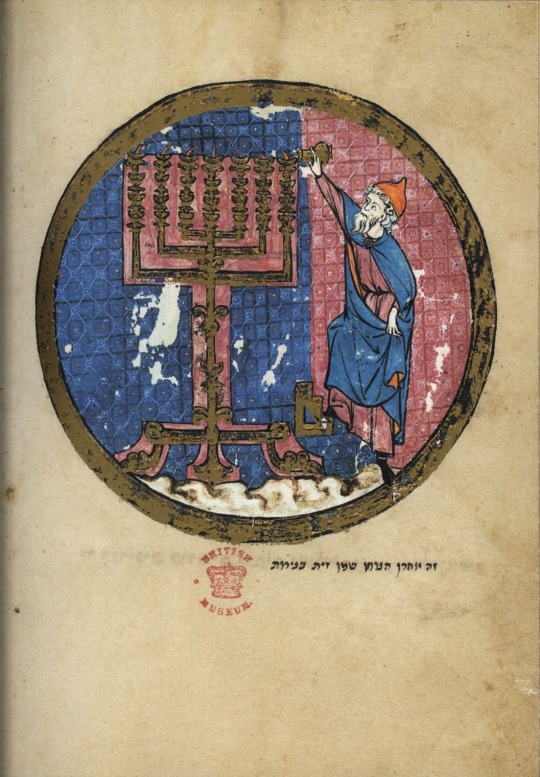
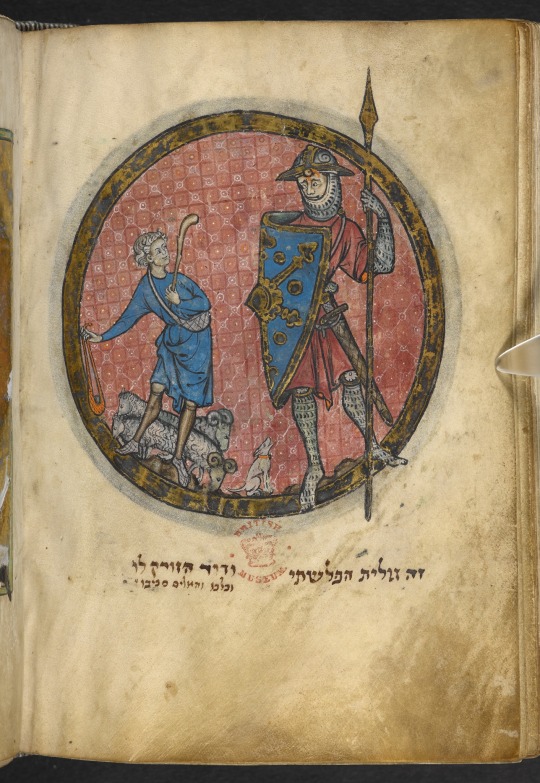


from the “North French Miscellany”, a Hebrew manuscript written by Benjamin the Scribe, c. 1277-86
2 notes
·
View notes
Photo

Illustration of the battle between David and Goliath from the North French Hebrew Miscellany, 13th century CE. This was a book compiled by a Jewish man called Benjamin the Scribe, perhaps for his own personal use, and then copied and illustrated by Christians.
{WHF} {HTE}
182 notes
·
View notes
Photo
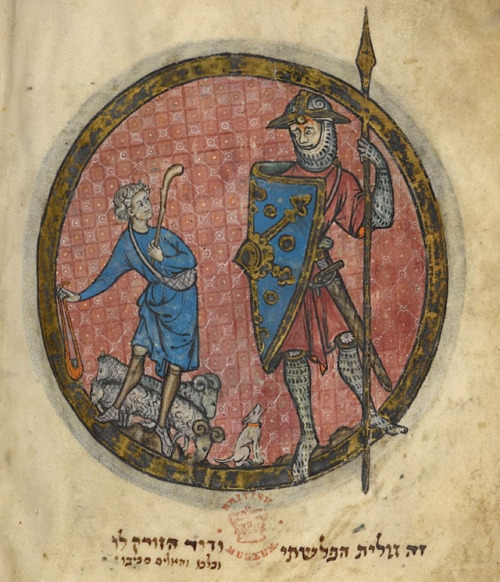
Illustration of the battle between David and Goliath from the… Illustration of the battle between David and Goliath from the North French Hebrew Miscellany, 13th century CE.
0 notes
Photo
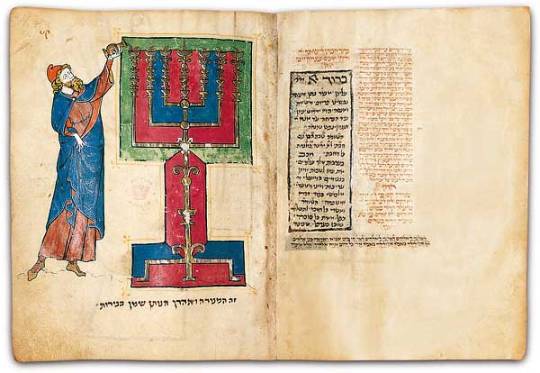
`
Folios 113b-114a of the North French Hebrew Miscellany manuscript - Aaron as High Priest. Aaron pours oil into the lighted lamps of the Tabernacle menorah, the seven-branched candelabrum. Date: 1278-98
#jews in medieval art#jews in jewish art#north french hebrew miscellany#JIMA France#JIMA 1200s#aharon
51 notes
·
View notes
Text
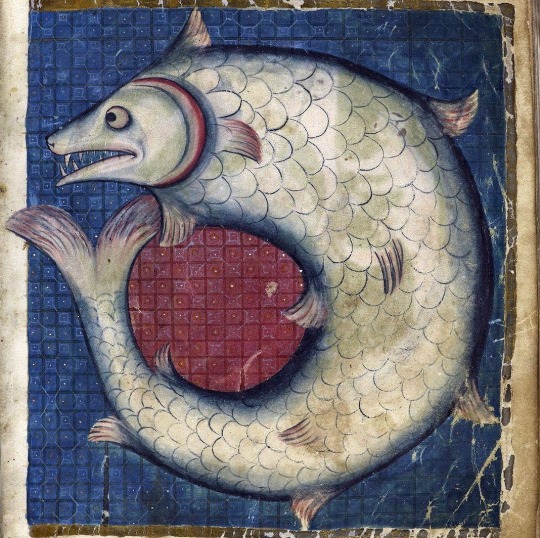
from the “North French Miscellany”, a Hebrew manuscript written by Benjamin the Scribe, c. 1277-86
2 notes
·
View notes
Photo
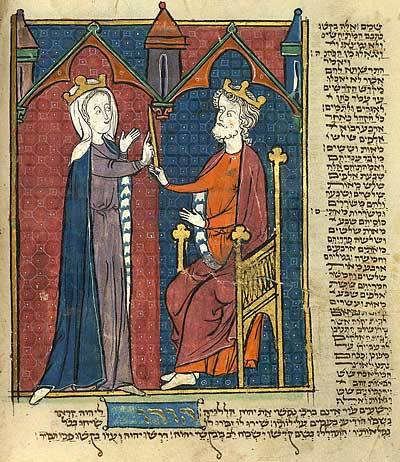
Esther Before Ahashuerus, from the North French Hebrew Miscellany ms.
Dated ca. 1278-98.
#jews in medieval art#jews in jewish art#jima france#jima 1200s#north french hebrew miscellany#esther#ahashuerus
71 notes
·
View notes